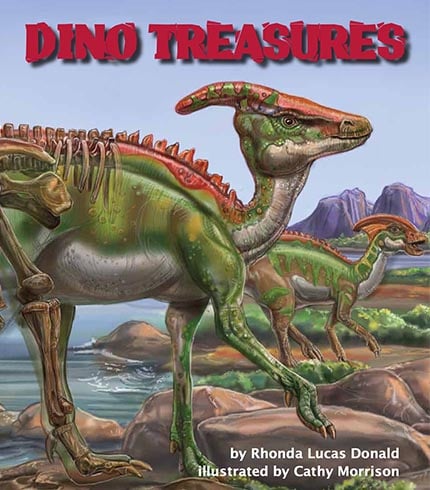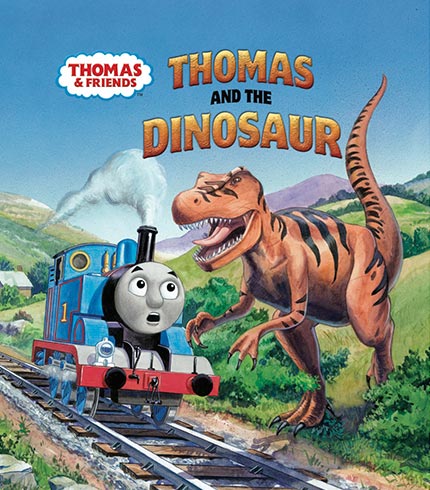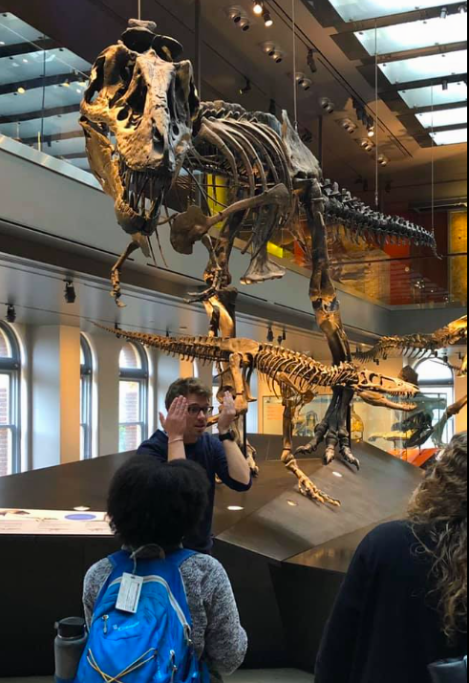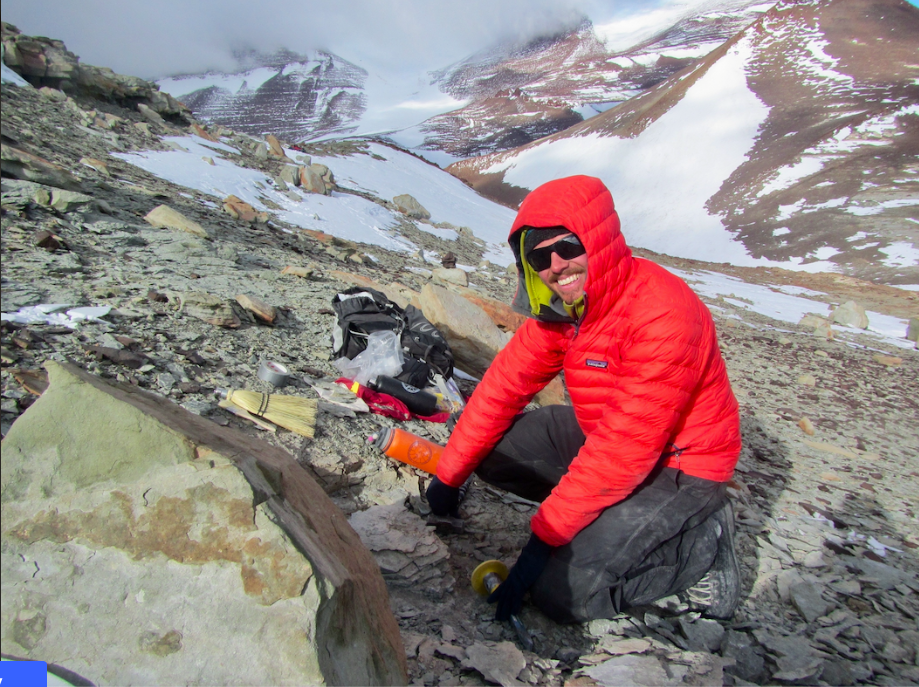Above: Reconstruction of Augustynolophus created by NHM Resident Natural Science Illustrator, Stephanie Abramowicz
By Beth S. Pollak / All Photos Courtesy Hank Woolley and the Natural History Museum of Los Angeles
It’s Dinosaur Day at #CampCaribu, and we’re talking to experts across the globe about their fossil findings and dino discoveries. Did you know scientists have found evidence of dinosaurs on every continent?



You can learn dino names and characteristics by exploring the excellent books in the #CampCaribu ‘Animal Adventures’ Summer Reading category this week! Enjoy illustrated stories and guides that introduce dinosaurs to children. You can also color-in some of our dinosaur drawing pages together. Schedule a Caribu call with your loved ones to plan a virtual dino playdate!
Our Q&A below features Hank Woolley, Graduate Student in Residence at the Natural History Museum in Los Angeles. Read on to learn what it’s like to dig beneath the surface of one of the U.S.A.’s biggest cities.
Natural History Museum of Los Angeles
Hank Woolley, Graduate Student in Residence at NHM; paleontologist Ph.D. candidate in the Department of Earth Sciences at University of Southern California
1) What’s special about digging for dinos in Los Angeles?

The NHM and the La Brea Tar Pits have more than 25 million specimens in vertebrate paleontology, dinosaur collections, and marine invertebrate collections. We have the surf and turf understanding of the history of life on earth that we can source right in our backyard in L.A.
What’s so cool about the Tar Pits is that it’s one of the few places that’s so easily accessible in an urban setting to look at the process of paleontology, from process to storage. It’s an active field site, and there are researchers, volunteers, and paleontologists actively digging in the pits and finding fossils all the time. You can walk through and watch people digging up fossils, and then go to the museum and watch the preparation for display. You can go to Disneyland one day and then to an actual fossil site the next day.
There are tons of construction projects within the greater LA area that run into fossils. In those cases, we have to do high stress excavations to meet the construction schedule. We’ll have tons of volunteers and scientists extracting fossils from where the foundation of the building is going to be.
2. What stands out about your collection?
We have hundreds of specimens of the famous saber tooth cat, the Smilodon, from the La Brea Tar Pits. About 10,000 years ago, they were prowling around Los Angeles, feeding on baby mammoths and things like that when they got trapped in the asphalt seeps at the Tar Pits.
3. What about the dinosaurs in your collection?

We have a fossil of the state dinosaur, Augustynolophus. It’s a duck-billed dinosaur with a cool bony crest that protrudes from the top of its head. It’s also a plant-eating dinosaur that is four legged and walks on all fours. It’s a remarkably complete fossil, and it is housed in our collection on display in our dinosaur hall for everyone to see.
Augustynolophus was found in marine sediments. During the time of the dinosaurs, the Mesozoic era, most of California was underwater. The occasional dinosaur might be walking along the beach and die, and tides would come in and wash it out. It lived during a hothouse time in earth’s history. The sea level was so high that North America was split in two by a seaway. Augustynolophus is one of the few West Coast residents that we know of from this ribbon-like landmass of North America.
4. Do you have any other favorite dinosaurs?

I like the Parasaurolophus, a type of Lambeosaurus. It’s a duck-billed dinosaur with a huge, long bony crest. It looks like someone strapped a trombone to the top of the dinosaur’s skull. All the members of this group have really cool skull ornamentations.
5. What are some recent innovations in paleontology?
The major advance is in our ability to put a fossil through a CT scanner at a hospital. We can understand the microstructure of these bones and compare that to the microstructure of living animals and humans. That can tell us about dinosaur growth rates. We can learn about diseases, study the incidence of injury and trauma, and understand how that affects dinosaur behavior and biology.
6. Why is it important for kids and families to continue learning about dinosaurs and prehistoric life?

We need to understand why animals go extinct. We’re in the middle of a sixth mass extinction, with species of animals and plants dying out at faster rates than they have in at least 12,000 years. The best data set that we have is fossils. They track the rise and fall of diversification, biodiversity and extinction. We need scientists more than ever to go sample these rocks and collect the fossils so we can continue to build a global record and predict the changes that we’re seeing right now. By having an informed data set, and by knowing historical trends, we can use our planet’s history to understand and manage our changing planet today.
7. What should kids and families do to continue their dino learning?
There are so many dinosaur books for kids! One of the best things about Caribu is that you have a summer reading challenge. It seems like a great way for families to connect over literature this summer when so many libraries and museums are closed. Plus, if you follow the science section of newspapers, there will be news about the science behind fossils, particularly with dinosaurs.
The museum has a new feature too: NHM LAC Connects. It’s a great place for visitors to the website who would otherwise be visitors to the museum. You can see virtual tours of our exhibits, meet scientists who work behind the scenes, and participate in tons of other events.
Read more about dinosaurs in the Caribu app! Download the app today so you can connect with your loved ones and share some more animal adventures. Learn, play, and color together in your next virtual playdate.
Beth S. Pollak is a writer and educator based in California. In addition to working with Caribu, she consults with educational organizations and EdTech companies. Beth has worked as a teacher and journalist in Chicago, New York, and San Francisco. She holds degrees in journalism, bilingual education, and educational leadership. In her free time, she enjoys hiking, biking, picnics, and dance.


